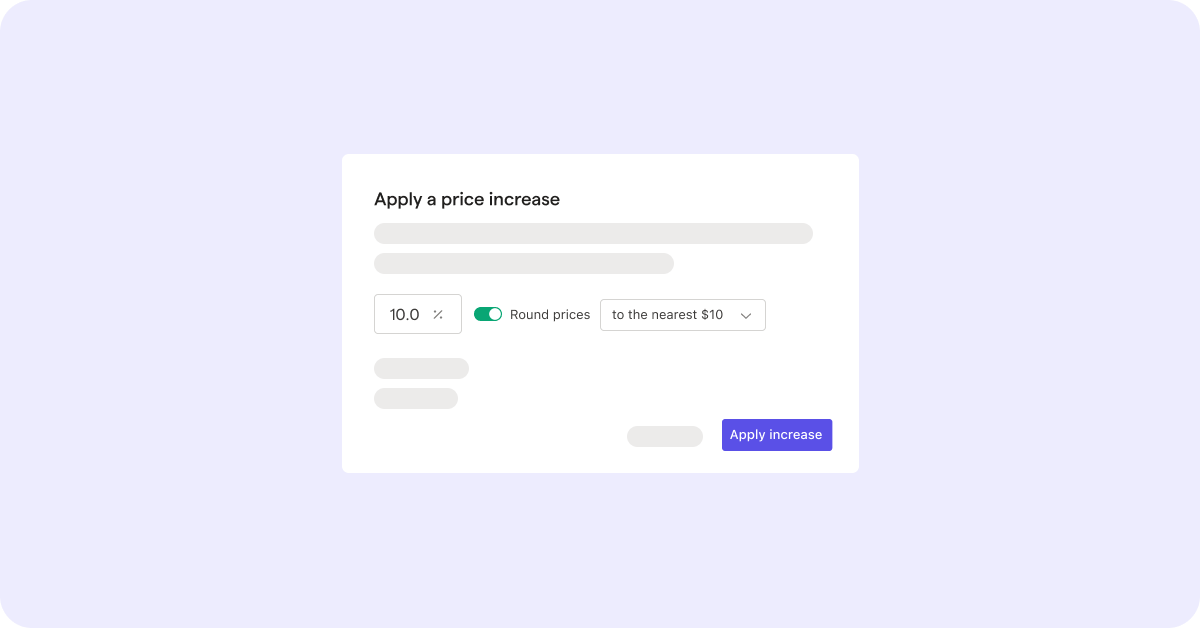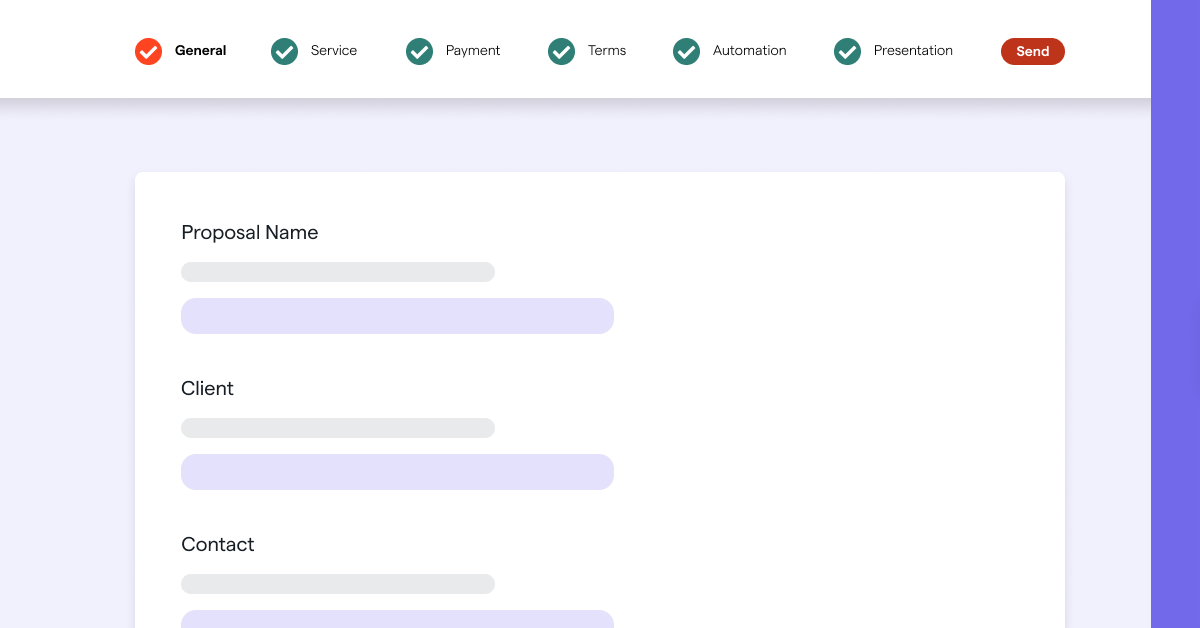digital resource
The ultimate guide to pricing & profitability
When it comes to running a successful accounting practice, reviewing your pricing and understanding what is impacting your profitability is crucial. Understanding how profitable (or not) your client and service are will help you determine where to allocate your resources and what needs to change.
In this high inflationary environment we are experiencing rising costs both operationally and with our staffing (as hard as it is to even find them). Coupled with an increase in client demands, a higher risk of audits and ever changing regulatory environment there is a lot of pressure on the bottom line of an accounting firm.
Read on!

Understanding your costs
The first place to start when repricing and understanding your profitability, is knowing what your costs are. This will help you better understand what your pricing needs to be and will give you confidence when increasing your prices. You will know what you need to charge to make this all worthwhile.
Typical firm expenses can be broken into three categories:
1. Fixed Direct Costs
These stay the same regardless of the number of clients or services you have and include things like client software subscriptions and other disbursements.
2. Variable Direct Costs
These change depending on output, and is usually just time spent on a job/client tracked via timesheets. However the cost is actual cost not the charge rate. Actual wages plus on-costs.
3. Overhead Costs
This is the bucket that catches everything else including occupancy costs, advertising, association fees and non productive or administration time.
Attributing your costs
Once costs are identified, you need to attribute these to determine the cost of delivering your services.
Fixed direct costs are the easiest to attribute as they are clearly identifiable. The ease of allocating variable direct costs will depend on your firm use of timesheets. If you use timesheets then the variable labor costs can be tracked and averaged out per service or client through timesheets. If you don’t use timesheets the time spent can be estimated for allocation.
Overheads are slightly more complicated and in professional services. The first step involves calculating the allocation base and rate, which can be done on either a revenue or labor basis.
Revenue basis: Divide total overheads by total revenue to determine overhead charge per revenue dollar.
Labour basis: Divide total overheads by total hours spent on a job to determine an extra “hourly rate” to be applied to the service.
The below is an example of how to calculate the overhead allocation. You can do this for any period of time, so long as you consistently apply that same period.
| Example Overhead Allocation | |
|
Total revenue |
$100,000 |
|
Total overhead |
$30,000 |
|
Total productive hours |
500 hours |
|
Revenue basis |
|
|
Overhead/revenue |
$30,000/500 = $60 |
|
Using this basis you would allocate an extra 30c in overhead in for $1 |
|
|
Labour basis |
|
|
Overhead/hours |
$30,000/500 = $60 |
|
Using this basis you would allocate an extra $60 in overhead in for every hour spent on a job or client |
|
Determining client or service level profitability
Determining client or service level profitability will help you identify your best clients and most profitable services. Now that you know how to allocate the costs to services, you can calculate for your clients how much it costs them to provide a service.
Following on from the above example, here is an example of the full profit calculation process.
| Example Client Profitability | |
| Type | Value |
|
Total revenue |
$100,000 |
|
Total overheads |
$30,000 |
|
Total productive hours |
500 hours |
|
Client revenue |
$10,000 |
|
Client disbursements |
$300 |
|
Time spent on client |
40 hours |
|
Staff hourly rate |
$70/hr (wage + oncosts) |
|
Revenue Basis |
|
|
Revenue |
$10,000 |
|
Less Direct Fixed Costs |
$300 |
|
Less Direct Variable Cost (40x$70) |
$2,800 |
|
Less Overhead Allocation ($10,000 x 30c) |
$3,000 |
|
Profit |
$3,900 |
|
Labour basis |
|
|
Revenue |
$10,000 |
|
Less Direct Fixed Costs |
$300 |
|
Less Direct Variable Cost (40x$70) |
$2,800 |
|
Less Overhead Allocation ($40x$60) |
$2,400 |
|
Profit |
$4,500 |
The results will vary depending on your overhead allocation method. As the labour basis centers on output and exertion required, you may find this is the more accurate method.
Revisit your pricing
Once you know you understand your client and/or service level profitability you can use this information to make changes to your pricing where appropriate.
Going through this exercise you will likely find that on a service level profitability may vary from client to client. This happens as the time inputs and cost will vary depending on the “size of the job."
In any professional service business, clients come in different shapes and sizes, which will impact the services that are offered and the pricing. That is why it is important to categorise our clients and to build a tool to do this quickly and efficiently.
Coming soon: Automatically increase prices when renewing client agreement

An example of this is below, showing three tiers for each service based on a size category of the business. Remember: these can always be edited on a case-by-case basis if you have a client that’s significantly larger or smaller than the ones that you usually work with. Once you know you understand your client and/or service level profitability you can use this information to make changes to your pricing where appropriate.
| Example Client Categorisation Tool | |||
| Small Client | Medium Client | Large Client | |
|
Bank Accounts |
1-3 |
3-5 |
>5 |
|
Finance Leases |
1-2 |
2-4 |
>4 |
|
Employees |
1-5 |
5-10 |
>10 |
Tip: Did you know you can import your firm’s services directly into Ignition to help get you up and running fast? Get started now.
All of this work prepares you for creating your pricing matrix. Your pricing matrix will allow you to set different minimum fees for your clients based on their categorisation. Allowing you to more confidently price your services upfront.
| Example Pricing Matrix | |||
| Service | Small Client | Medium Client | Large Client |
|
Business Activity Statement |
$250 |
$350 |
$450 |
|
Annual Accounts |
$2,500 |
$3,500 |
>$4,500 |
More than pricing
Don't forget that more than pricing can impact your profits. Poor systems and processes will impact your bottom line. More profitable businesses will usually have:
- The right team members doing the work
- Efficient process and technology that minimizes double handling and low value tasks
- Robust client engagements where they are in control of the work in process eliminating disputes and “pick up put down” syndrome.
Access 40+ templates with recommended pricing & common deliverables

Automate accounts receivable using Ignition
AR automation is a system or workflow that automatically generates and sends invoices to your clients at the right time. It can reduce or even eliminate human involvement in the billing process. Depending on how you set up your AR process, you can streamline tasks such as:
- Generating invoices.
- Sending invoices.
- Sending reminders for past-due bills.
- Processing payments.
When looking for the right automated AR software for your business, make a list of the features you need, then use it when conducting your research. Perhaps you require upfront payment before starting an engagement, or maybe your payment schedules vary from client to client. You want AR software that can accommodate these needs. Ignition, for instance, offers features and automation to support various billing schedules, including weekly, monthly, annual, or on a per-project basis. When you streamline how client bills are sent, processed and paid, you can maximize productivity, improve client satisfaction, improve your cash flow and increase your bottom line.

Related: Effective cash flow strategies for accountants and bookkeepers

With these automations in mind, software integrations make for another important consideration. If possible, you want a system that integrates with your existing technology. This might include your accounting software, client engagement platform, and customer relationship management (CRM) software. When your various systems can effectively talk to one another, sending information from one app to the next, this can further reduce human involvement. Ultimately, with the right tools and automation, you’ll reduce the risk of errors, increase your productivity and save that most sought-after of resources: time.
Read this Ignition year in review article to see how Ignition helped 6,000 customers get paid, save time and grow their revenue in 2022.
With these tools and techniques, you can build trust and grow along with your clients, keep work on track and increase your profitability.
Over to you
The Ignition client engagement and payments platform makes it simple to sell, bill and get paid for your services – all in one place. To learn more about how Ignition can help you with scope creep management and grow with your clients, watch our demo today.
Subscribe to the Ignition blog
Subscribe today to keep up with the latest trends and receive tips on running professional service business
Average based on thousands of reviews




